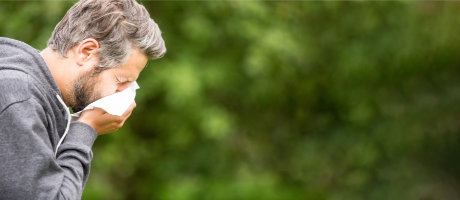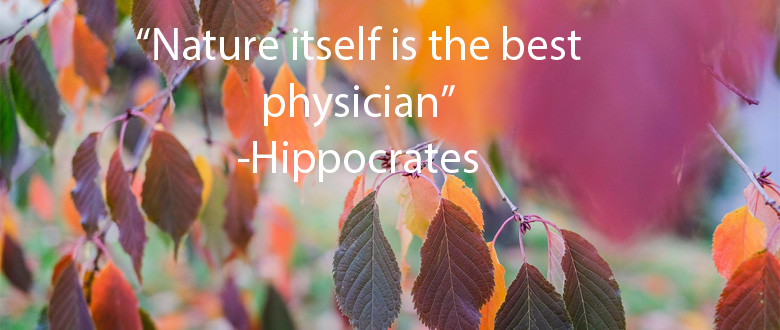Achoo! Sniff. Sniff. It could be allergies. Spring is here and so is pollen, grass in seed, mold from heavy rains. Allergy specialists report that between 10-30% of the population including infants and children have allergic rhinitis (AR) which is the medical term for “hay fever”, its lay name. In my practice as an N.P., it seems like many more adults presume that they have allergic rhinitis when in reality sometimes they are experiencing something else like a cold, a sinus infection, or covid 19.
“Seasonal rhinitis” simply means that the allergic response happens during seasonal change. In spring, tree pollens and other pollens, and in fall, weeds, are usually the culprit, especially ragweed. The symptoms include rhinitis which is runny nose, nasal congestion, itchy nose, itchy eyes that may also tear up, and occasionally cough especially with asthma.
Let’s discuss spring allergies. The only way to get allergies properly diagnosed is to see an allergist, a doctor who specializes in allergies. I am amazed at how many middle-aged folks say that they have suffered for decades with allergies but have never seen an allergist. Blood tests and skin tests along with history and exam at the allergist’s office will yield not only an allergy diagnosis but also tell you what you are actually allergic to. So I highly recommend that this visit be scheduled.
Allergy symptoms
True, you can self-diagnose seasonal allergies if every year when the trees bloom you start your symptoms, but to properly treat the condition you need to know specifically what you are treating. Nasal symptoms consist of runny, itchy nose and/or nasal congestion (feeling “all blocked up”) and these can be treated locally with a nasal spray into the nose or systemically with oral medicine. The oral medicine for congestion is decongestant medicine and the strongest is Sudafed which must be signed out at the pharmacy window with a driver’s license. This is because the medicine can be used to make “meth” and thus the government tracks how much of it individuals purchase.
Allergy medicines non-prescription
I recommend getting the strong stuff and taking 60 mg which is two small little red 30 mg pills, and if necessary repeating the dose later in the day but never before bedtime. The reason is that the medicine can keep you awake just like caffeine can. The options that are over the counter and don’t require being signed out can be tried but may not be as effective. Oral antihistamine pills can treat the running nose, itching, sniffling symptoms. Loratadine with the name brand Claritin is taken daily in a 10mg dose. This is the mildest of the newer generation antihistamines and can be tried first. Ceterizine is the generic name for Zyrtec and is stronger.
About 50% of my patients reported this medication to be too sedating but if it is taken at bedtime and does not lead to drowsiness the next day it is a good option. Fexofenadine is generic for brand name Allegra. It can be tried and also a newer over the counter med Xyzal is reported by many to be effective though it can be sedating.Xyzal has zyrtec in it so it is not a good choice for those that find Zytec too sedating. These medications all started out as prescription only medicines but now can be bought over the counter.
Zyrtec was one of the first antihistamines that came in a pleasant liquid for children, so it was used often in pediatric practice. Make sure when you buy these medicines that if they have D after their name as in Zyrtec D that they include a decongestant and may be stimulating or cause insomnia. Some people with both congestion and runny nose take an antihistamine with decongestant in the morning so that they do not experience trouble falling asleep at night (from taking the decongestant before bed). And some people especially children can have what is called a paradoxical reaction to antihistamines meaning that instead of getting tired they get wired. (Yikes, if it happens to a two-year-old at bedtime). Eye symptoms such as red watery eyes with itchiness are usually caused by tree pollens; some people have severe eye discomfort. Cold ice packs applied over the eyes while lying down helps give fast relief.
Allergy eye drops are often used while trees are in the pollen stage. Pataday eye drops are now over the counter. Stronger eye drops are available by prescription. Limit outdoor exposure if you are one to have eye discomfort and when out have your eyes covered with sunglasses or other lenses to prevent pollen entry. Often people will reach for Visine drops or other redness reducing drops for eye allergy but most eye doctors do not recommend these types of drops for anything other than red eyes from a hangover or cannabis use. If allergy symptoms are very bothersome it is better to run air conditioning indoors versus having windows open that carry pollens inside. Do not hang bedding on an outdoor line to dry as the pollens will then be carried inside and breathed in all night while you sleep. Make sure if you are very allergic in spring that you shower when you come inside and shampoo your hair and your eyebrows as pollens like to settle in these places.
Water intake is essential to help flush out allergens. Drink half your body weight in ounces of water daily. This will keep your nasal secretions dilute and all your mucous membranes moist. Carry a water bottle everywhere during allergy seasons especially. If you don’t have a functional and decorative water bottle you won’t use it. So if you don’t have one you like, check out the Lively bottle website for customized water bottles. Try to anticipate when outdoor activities may be symptom producing by following allergy counts in the weather reports.
A natural approach to pollen allergies that is not proven medically but many swear buy is to purchase locally made honey and ingest it daily. The way this works is that honey made close to your home has been created by bees that produce honey after pollenating local plant life. So if you eat some daily, it is like giving yourself small allergy shots by getting your body to adjust to local pollen. Put honey on morning oatmeal or toast and stir into tea lemonade or even coffee. Continue throughout allergy season. Hopefully these tips will keep you comfortable and as symptom free as possible during outdoor allergy seasons.
Our Family Nurse
Our Family Nurse provides personalized home nursing care in Chicago’s west suburbs, on a monthly or hourly basis. Contact [email protected] or complete this short signup form if you’d like Lisa to call you.

